Historically, waste has been a burden placed on vulnerable and marginalized communities, so our office wanted to follow Emory’s waste by using the Environmental Protection Agency’s Environmental Justice tool to see which communities are being affected. The demographic data we use are from the 2015-2019 American Community Survey. We hope that contextualizing where our waste goes will remind us that there is no “away” when we throw away.
If you want to get more involved in our waste reduction initiatives, visit our website to learn more about programs like Zero Waste Ambassadors, Green Offices at Emory, Green Labs at Emory and the Sustainable Events Certification program. These programs have all been grounded in an effort to help community members understand our connection to communities and to take conscious actions to reduce their contributions to polluting industries that affect those who live near these facilities. To learn more about general waste diversion and reduction at Emory, check out our Zero Landfill Waste initiative.
Nonhazardous Chemical Waste
Nonhazardous chemical waste includes chemicals not regulated by the EPA (mostly chemicals that are not as hazardous as regulated chemicals), such as silica gel, latex paint, and certain lab chemicals like sucrose and iodine. Our nonhazardous chemical waste goes to US Ecology Inc. in western Atlanta. In the area immediately surrounding the facility, 99.9% of residents identify as a person of color, 29% of residents identify as low income, and 4% of adults have less than a high school education.
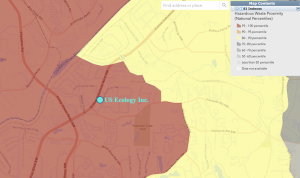
The immediate area surrounding the facility has a hazardous waste proximity between the nation’s 95th and 100th percentiles.
Hazardous Chemical Waste
Hazardous waste chemicals from Emory’s research and teaching labs are incinerated or fuel blended for use in cement kilns. Our hazardous chemical waste goes to US Ecology Sulligent Inc. in Sulligent, Alabama, which is 220 miles west of campus. In Sulligent, immediately surrounding the facility, 16% of residents identify as a person of color, 64% of residents identify as low income, and 17% of adults have less than a high school education.
If you work in a lab, don’t buy chemicals in bulk! By micro-scaling your experiments and only buying as much solvent as is needed, you can avoid disposing of unneeded, expired chemicals. Check our our Green Labs at Emory Program for more tips!
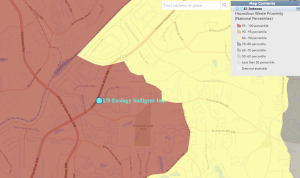
The immediate area surrounding the facility has a hazardous waste proximity between the nation’s 95th and 100th percentiles.
Regulated Medical Waste
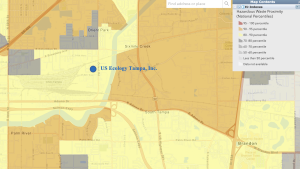
Regulated Pharmaceutical Waste
Our regulated pharmaceutical waste goes to two locations. One is the Stericycle Treatment Facility in Lake City, Georgia, which is 15 miles south of campus. In Lake City, immediately surrounding the facility, 90% of residents identify as a person of color, 54% of residents identify as low income, and 18% of adults have less than a high school education.
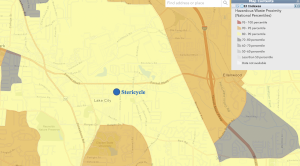
The immediate area surrounding the Lake City facility has a hazardous waste proximity between the nation’s 80th and 90th percentiles.
Our regulated pharmaceutical waste also goes to the Stericycle Incineration Facility in Apopka, Florida, which is 440 miles southeast of campus. In Apopka, immediately surrounding the incinerator, 77% of residents identify as a person of color, 53% of residents identify as low income, and 15% of adults have less than a high school education.
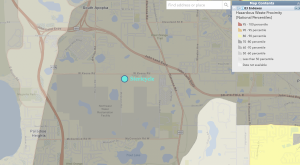
The immediate area surrounding the Apopka facility has a hazardous waste proximity between the nation’s 70th and 80th percentiles.
Pre-Consumer Compost
Our pre-consumer compost will now be hauled by Goodr, our new composting and landfill waste vendor, and will be delivered to a few locations, with the primary destination being Gainesville Waste and Recycle in Gainesville, Georgia. Gainesville Waste and Recycle contains a multi-faceted composting facility and is notably the only fully permitted landfill, recycling, and composting facility in Georgia. In the area immediately surrounding the facility, 88% of residents identify as a person of color, 58% of residents identify as low-income, and 34% of adults have less than a high school education. Other (non-primary) destinations for our pre-consumer compost will be 400North Landfill in Dawsonville, GA; the Truly Living Well Urban Agricultural Center in Atlanta; and Wundergrubs Sustainable Food in Atlanta.
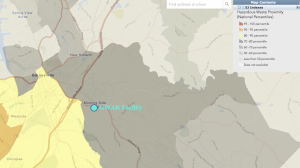
The hazardous waste proximity of the area immediately surrounding the facility is between the nation’s 70th and 80th percentiles.
